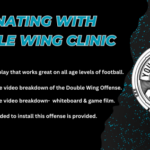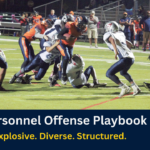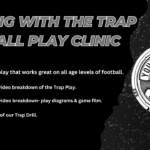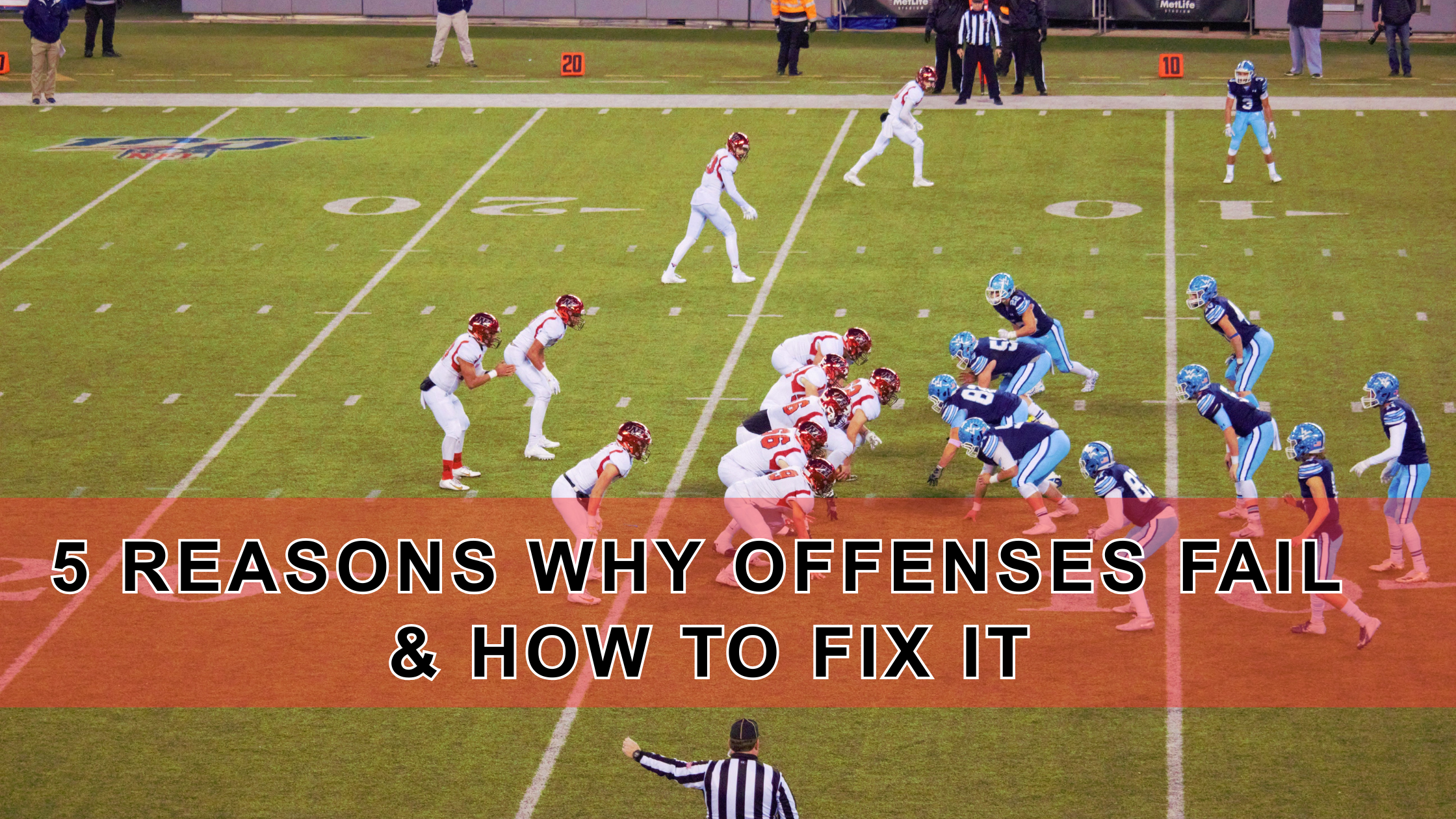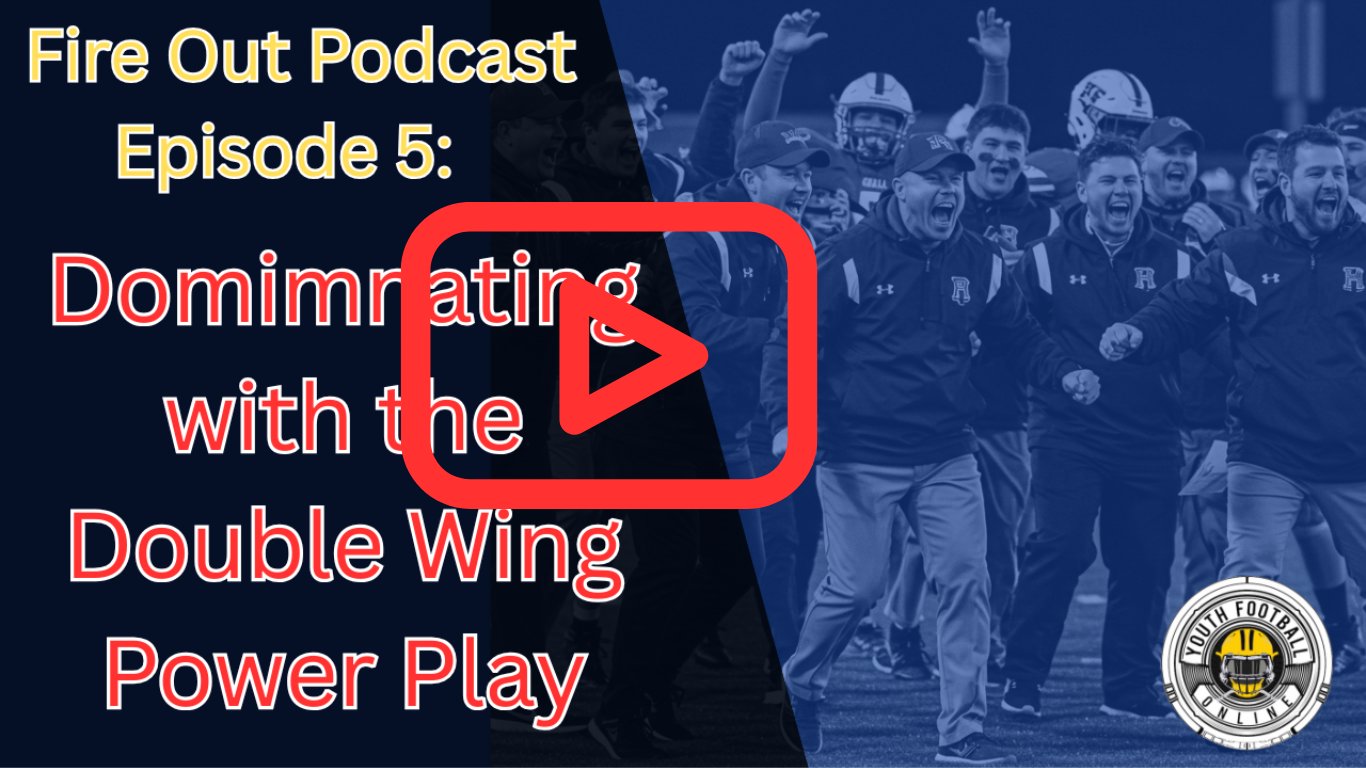Wide Tackle 6-2 Defense for Youth Football | Complete Breakdown
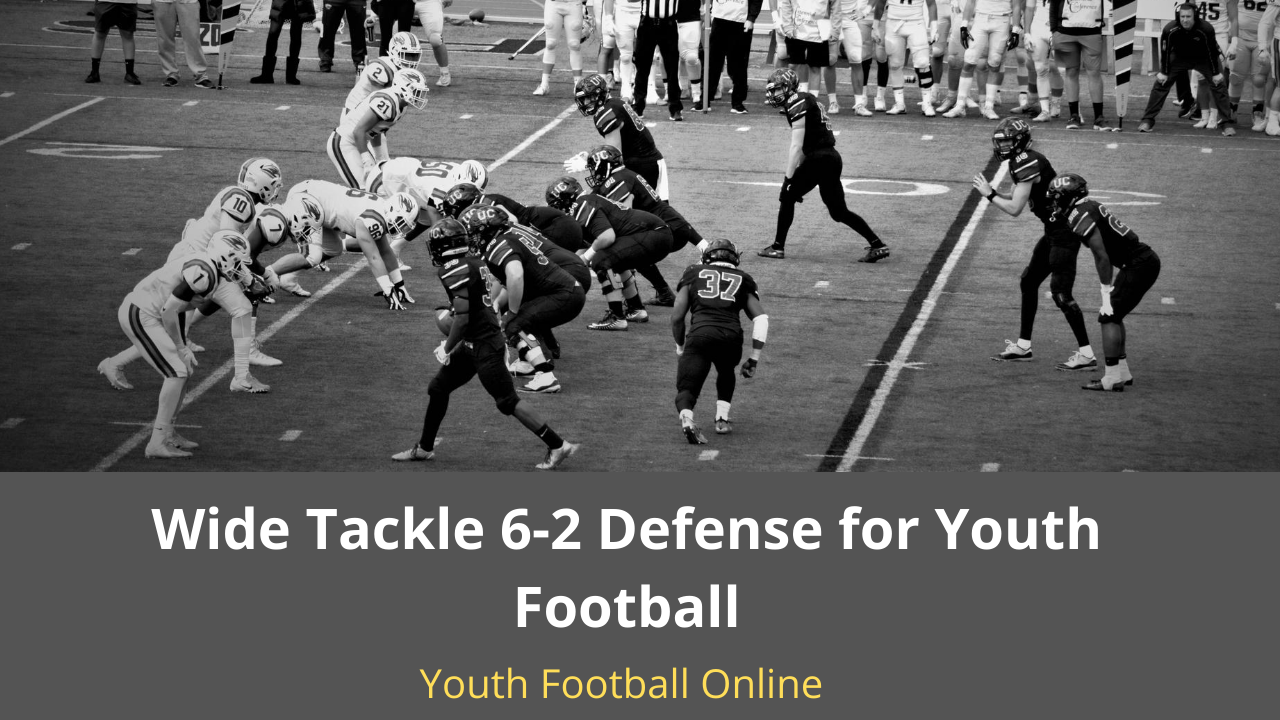
The Wide Tackle 6-2 Defense is a great defense for youth football. It gives you a strong 8-man box which will help you shutdown the run. We all know that youth football is a run first level of football- loading up the box and stopping the run is paramount. As far as pass coverage goes, I think it’s best to play man to man coverage. The 6-2 defense is great for the younger age levels of football where passing is almost nonexistent. When you run the 6-2 defense you are essentially saying that you are committed to stopping the run! Here’s everything you need to know about the Wide Tackle 6-2 Defense for Youth Football.
Wide Tackle 6-2 Defense for Youth Football
Strengths
- Gives you eight in the box making you very tough to run against.
- C-gap defenders (wide tackle defense) are very difficult to block and allow you to anchor the off-tackle gap. If you have two good C-gap players that can penetrate it will be very difficult for the offense to move the football off-tackle or outside.
- Double A-gap defenders create blocking confusion for the offense- most of the time the offense will use 3 blockers (Center & two Guards) to block your two A-gap defenders. You two inside linebackers will almost always be free.
- Wide defensive ends/ linebacker hybrids will allow you to contain the outside and turn the play inside to the linebackers. With such wide defensive ends you put emphasis on not getting beat outside.
- Very simple defense to install. Keeping things simple will allow you to play defense much faster.
- Linebackers are hard to find on the youth football level. Most teams will only have two or three natural linebackers. With the 6-2 defense, you will put your two best players at linebacker and let them run and make plays. You only really need to find 2-3 linebackers.
- The 6 defensive linemen will free up your inside linebackers to make plays!
Weaknesses
- When you commit 6 defenders (more than half of your defense) to the line of scrimmage you don’t have a lot of pursuit to the ball carrier. This defense only has one distinct level of defenders. So if the ball carrier breaks past the first level of defenders you are in trouble.
- Defending spread formation is very difficult. When a team goes 2×2 or 3×1 how are you going to align?
- When you are facing spread teams you have to play man to man across the board. You will have to bump out the wide ends and your safety because you need to keep your two inside linebackers in the box. You will be playing zero coverage. You better have defenders that can play man to man coverage. Keep in mind that spread offense spread the field to run the football!
- Adjusting to unbalanced formations is a bit tricky. Will you shift your defensive line? Or roll a safety down?
- If the ball carrier gets outside you won’t have any defenders to pursuit because they are all on the line of scrimmage.
- Your two inside linebackers better be downhill, but also very smart. You need to give them reads / keys because if they bite on a misdirection they will take themselves out of the play. You need both linebackers getting to the football.
Position Overview / Alignment / Pass Coverage
Yes, I have the defense on the top. I’ prefer to draw offense on the bottom and defense on the top.
Alignment vs. Double Tight-end
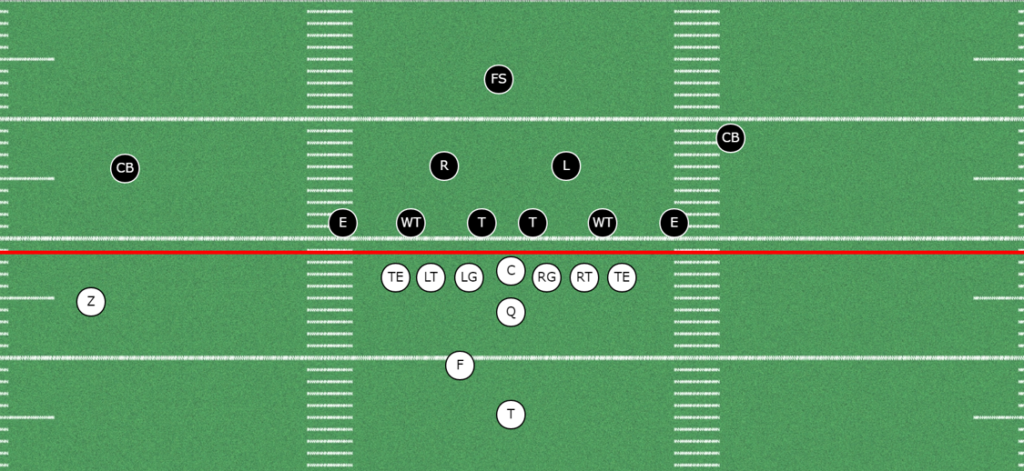
Here’s the base position overview of the Wide Tackle 6-2 Defense. There are several different ways coaches will label their position but I just wanted to give a simple overview of the positions and base alignment.
Tackles (T): Both defensive tackles play in the A-gap. Both are interior defenders that are taught to penetrate.
Wide Tackles (WT): Both of these will play in the C-gap. If they have no Tight-end on their side they will play on the outside shoulder of the offensive tackle.
Ends (E): These are the defensive ends that are primarily responsible for contain. They will always line up with outside leverage. These need to be some of your best athletes because they will be called on to cover inside receivers when offenses go 2×2 or 3×1.
End Note: You can have a wide side E and a boundary side E. The Wide Side E will always go to the wide side of the field, while the boundary E will always go to the short side of the field.
Right Inside Linebacker (R): This is the inside linebacker that lines up to the right.
Left Inside Linebacker (L): This is the inside linebacker that lines up to the left.
Linebacker Note: If you want you can label one as a strong linebacker and one as a weak linebacker. The strong linebacker will always align to the strength of the offensive’s formation and the weak linebacker will always go to the weak side of the offense’s formation. These should be your best defenders!
Cornerback (CB): These are your outside defenders that help with contain and/or will cover the widest receiving threat aligned to their side.
Free Safety (FS): The Free Safety will line up in the middle of the field. You can do several different things with this position. You can roll him down in the box to give you a 6-3 look or you can have him cover a receiver when teams spread you out. This should be a kid that you can move pretty much anywhere.
Alignment vs. Spread
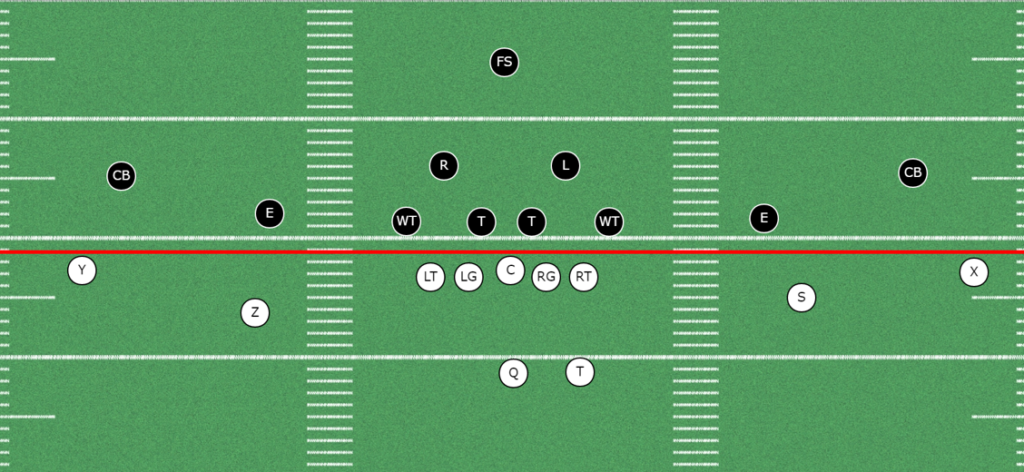
When it comes to facing spread offenses it gets a little tricky. With that said, I’ll go ahead and show how I would align vs. spread teams. For me, I would bump out my defensive ends and have them lock on the inside receivers (lock= man coverage). The CBs will take the widest receivers to their side. I don’t like the idea of taking my R or L out of the box to cover an inside receiver. Why? Because I’d rather have my best run defenders in the box and able to defend the run. If a running back comes out of the backfield the inside linebacker (L or R) on that side will have to bump out. Or! You can just have the safety roll down and cover the back when we comes out of the backfield on a pass route.
Alignment vs. Empty
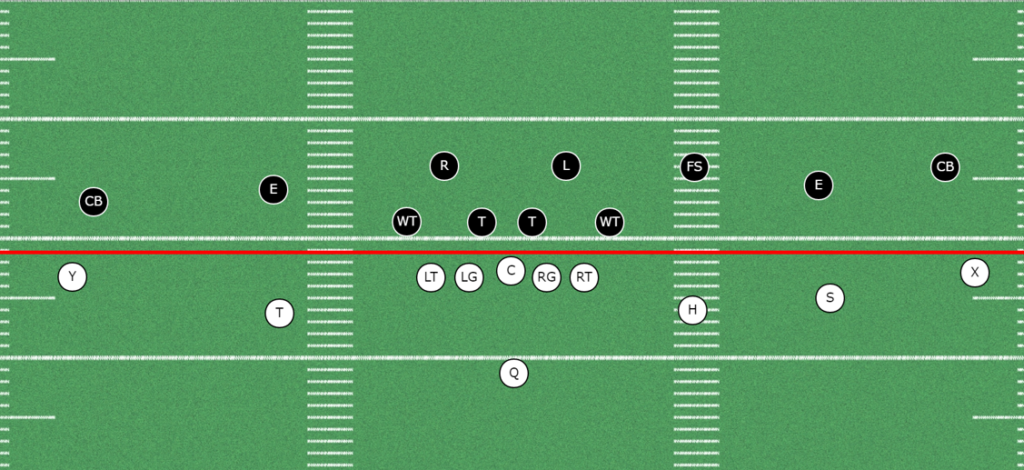
I’m not sure how many youth football teams actually utilize the empty formation, but here’s the alignment vs. empty anyway. For me I would roll down the safety and have him cover the #3 receiver. All defenders will play man coverage across the board (zero coverage). Again, I rather always keep my R & L in the box. However, if you are in a prevent situation you can keep the safety back and bump out a linebacker.
- Make sure your players understand that since they are playing man coverage they have to run with the receiver they are covering if that player does any pre-snap motion or shifting.
- Playing man to man coverage is a dudes game. Can your athletes lock on their athletes? It’s important that you practice man to man coverage techniques regularly. It’s up to you whether you play press man or off man to man coverage.
See Also: 10 Ways to Maximize Press Man Coverage in Football
Base Gap Responsibilities of the 6-2 Defense
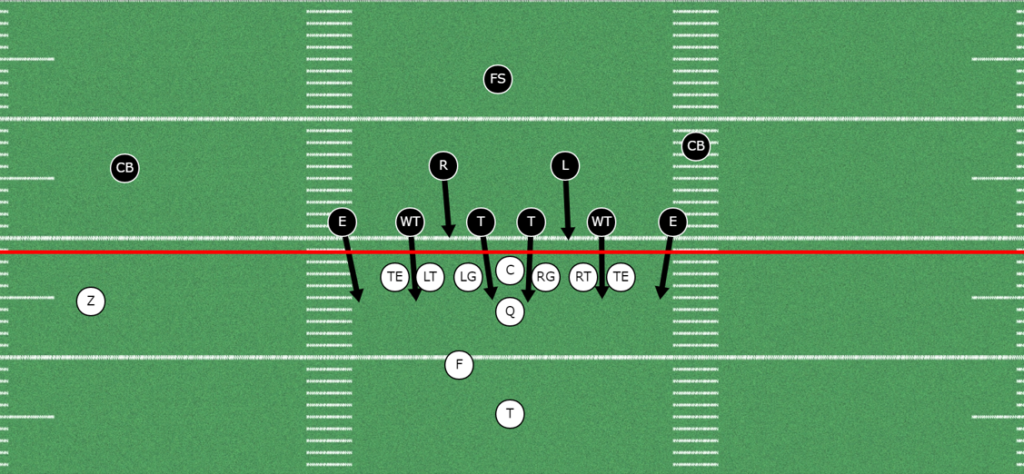
Tackles: A-gaps.
Wide Tackles: C-gaps.
Defensive Ends: Contain. D-gap.
Right Inside Linebacker: B-gap.
Left Inside Linebacker: B-gap.
Cornerbacks: Man coverage on #1, help contain on run.
Free Safety: Deep middle.
Blitzes out of the Wide Tackle 6-2 Defense
“RIP”
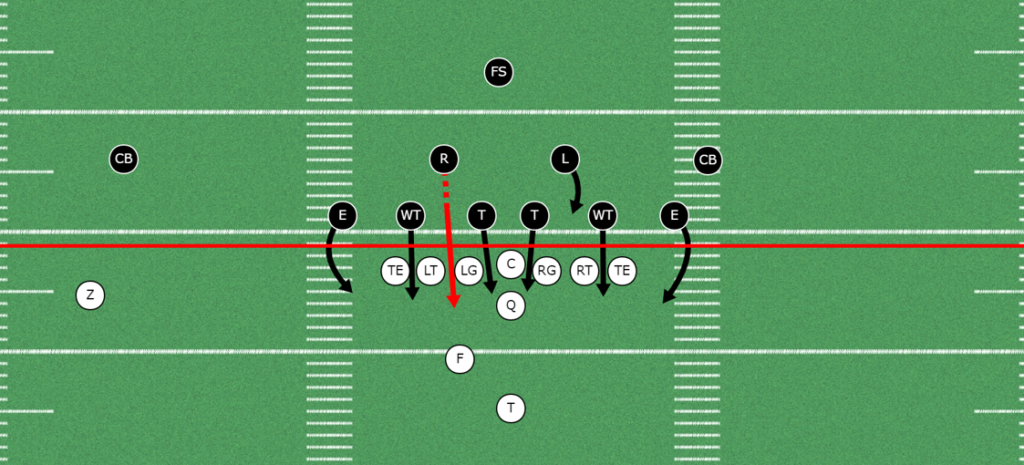
Here’s a simple blitz that works very well against interior and off-tackle plays. It’s important that the R linebacker creeps up to blitz only when the QB begins his cadence. You don’t want to show the blitz too early. This will give the offense time to process the blitz. When the Right Inside Linebacker hears “Rip” that means he is blitzing the B-gap. If you want to execute this blitz with the L you would call it “Leo”.
“Rip Indy”
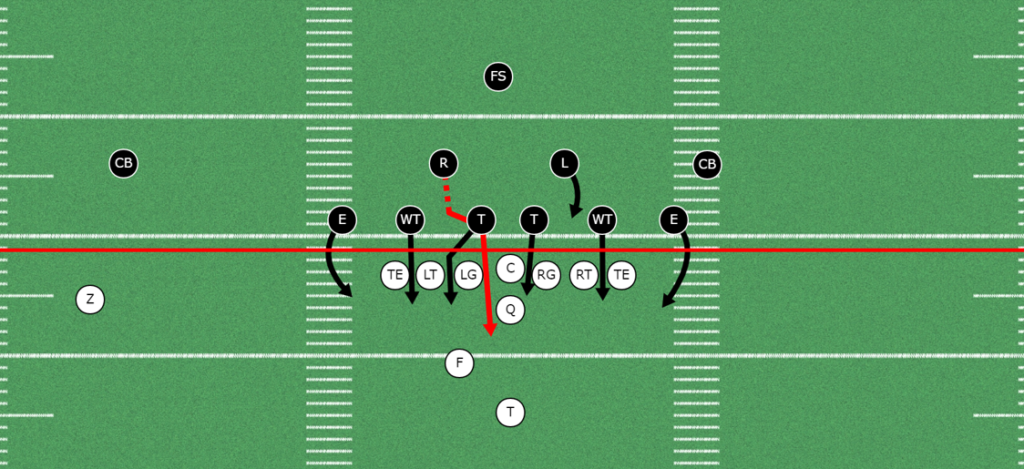
This is one of my favorite blitzes out of the wide tackle 6-2 defense. Again, this blitz is simple. However, the offensive line will have a very difficult time picking this blitz up. The T and the R will execute a simple twist stunt. The T will slant to the B-gap and the R will blitz A-gap. The R will begin creeping up once the QB begin his cadence. The R will show like he is blitzing the B-gap and then once the ball is snapped the T slants in front of him to the B-gap and he twists around the T to the A-gap. If you want the L and the other T to execute this you can call it “Leo Indy”.
Alabama
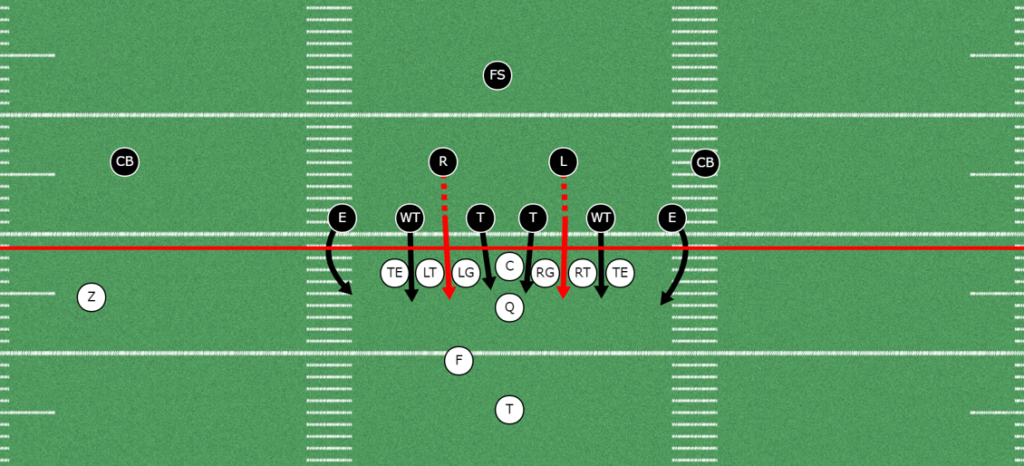
As you can see this is an all out blitz. Alabama means ALL linebackers are blitzing. You can execute an “Alabama Indy” which will tell the T to slant B-gap and have the R and L blitz A-gap. This is a risky blitz because you are sending all your first and second level defenders, leaving you with very little pursuit to the ball carrier. However, this is an overwhelming blitz that is very difficult to block and it could very well demoralize the offensive line.
Rip Loop
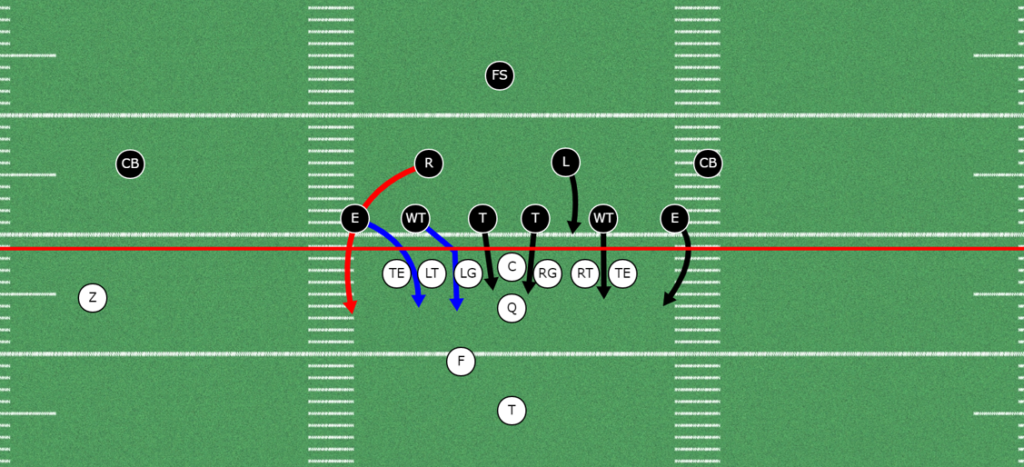
This is a blitz/ stunt we call “Loop”. This is a great change up for your defense. The E and WT have the same gap responsibility in most of these calls. However, on this Loop the E slants to the C-gap and WT slants to the B-gap. The R will loop around and now become the contain player. The R will almost always be a free rusher off of the edge. It’s a simple gap-exchange.
See Also: Cross Blitz out of the 6-2 Defense
Loop vs. Spread
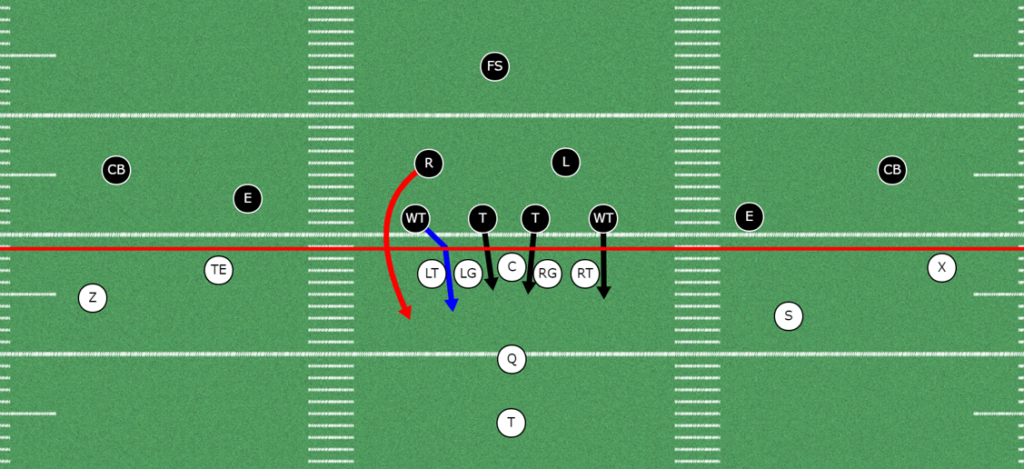
This is a great pressure I like to use against spread formations- especially against 2×2 formations. This blitz almost works against spread formations because the R will usually have a free rush off of the edge. You can also execute a double loop that has the R and L loop outside- we would call that Alabama Loop.
Conclusion
When it comes to coaching the Wide Tackle 6-2 Defense you must understand all of it’s strength and weaknesses. For me, I think this is a great defense for the younger age levels of youth football. On the older levels I feel like spread formations create a lot of alignment conflict for this defense. A disruptive Wide Tackle will allow you to completely take away off-tackle plays. In addition, a good WT will help shut down plays that attack the edge as well. A few years ago we play a defense in playoffs that had two really good wide tackles. We had trouble blocking them all game long and it forced us to come up with a new tag (blocking adjustment) just for when we play the Wide Tackle 6-2 Defense.




